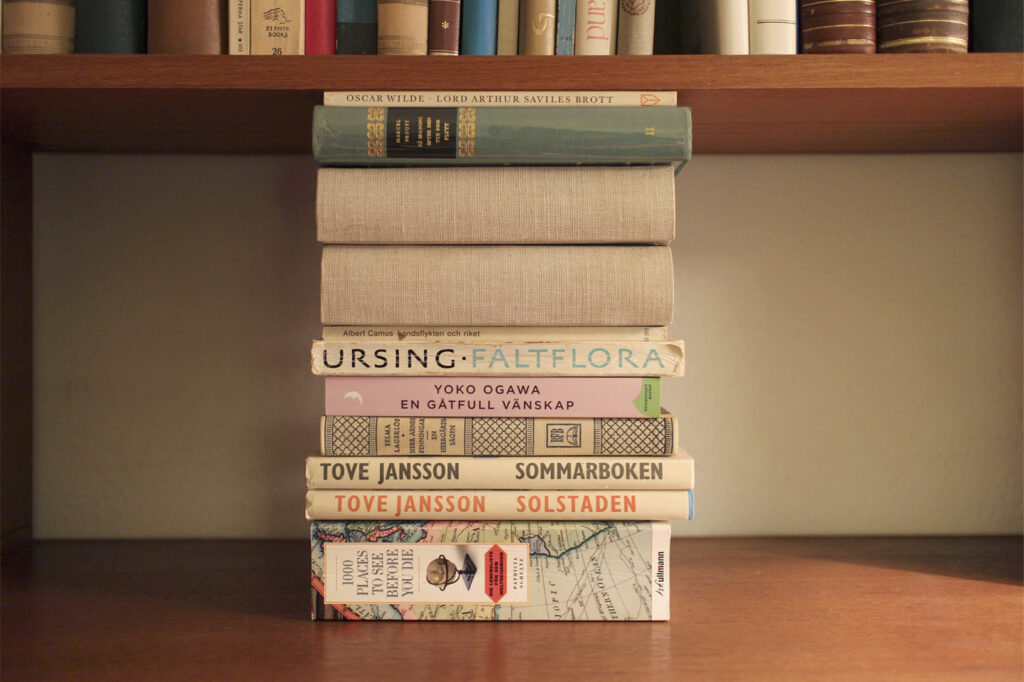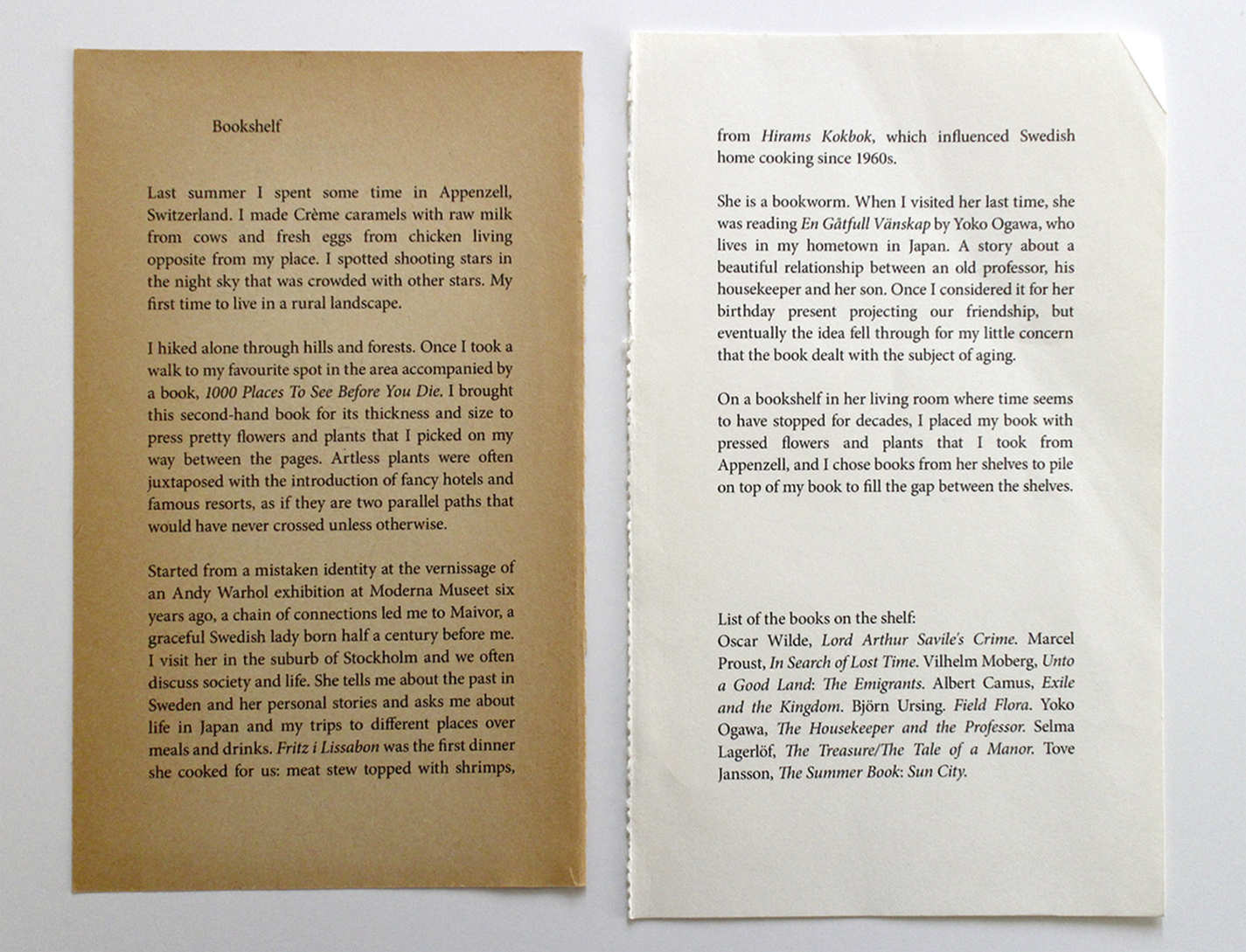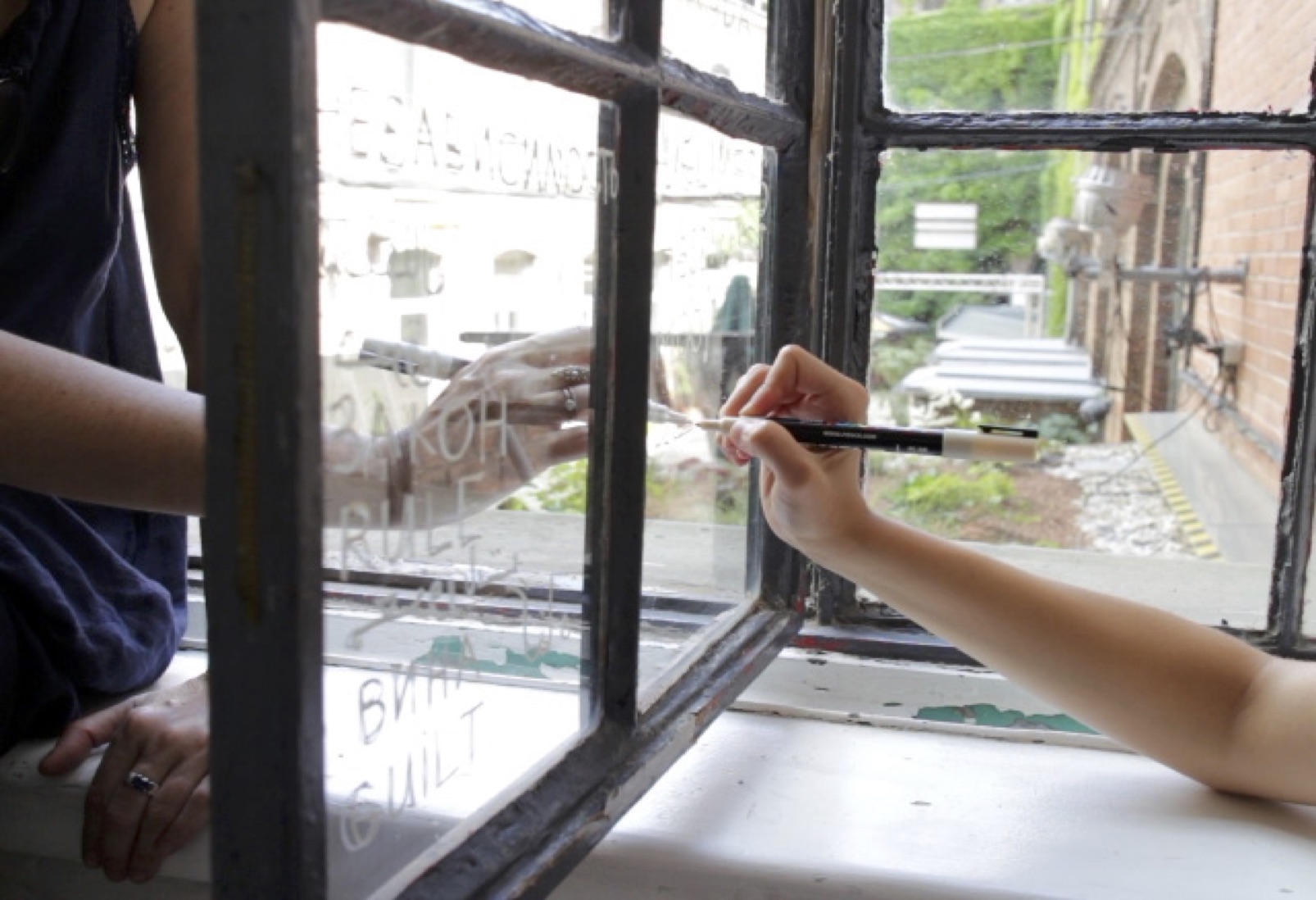
“Resonerar väl med mitt synsätt kring tanken om meningsfulla rörelser”
Svenska / English
On 29 May 2023 Grafikens Hus met Mako Ishizuka for a “studio visit” at a café in Stockholm, as she works without having any fixed locations. Mako Ishizuka is a multidisciplinary artist, using medias such as drawing, print, photography, video, installations, architectural settings, essays, and social projects within her practice. The essence of her artistic work is in her beautiful and meticulous creations, which can also be seen as documentations of her artistic process.
Written by: Nilo Amlashi
What does print making mean to you and your practice?
This question reminded me of how I got in contact with the practice of printmaking. As my father does traditional woodblock printing as a hobby, printmaking was always around in my childhood. In fact, my first participation in an international exhibition was actually with my first black woodblock print, about labour, that I made at school when I was only 10 years old.
Printmaking came back to me when I played with the idea around delicate diplomacy between the ‘public’ and ‘private’ in Amsterdam for my BFA exam show. I printed a personal letter with photopolymer plate without using ink and developed it into an installation, where one viewer’s experience of reading a letter becomaw a performance for other viewers. The letter is readable only if you tilt it and the embossed words get the light from the direction that cast shadows, while it appears one is staring at a white paper when seen from the side. The work somehow captures the essential elements in my practice – which makes it a work that has been very dear to me.

Which printing techniques do you mostly work with and why?
I have worked with woodblock, letterpress, silkscreen including risoprint (which was popular in the 1980s and 1990s in Japan, and many households had a portable risomachine to print postcards). Also, Asian traditional stone seal engraving, which perhaps can also be considered as a sort of printmaking practice? I never make an active choice in using these techniques. It rather starts with an idea that I want to communicate, which itself finds a suitable medium/technique as its language.
In your own words, what signifies your graphical expression?
In a world filled with divisions and conflicts, it is important for me to reflect on how things look like from the other side and to attempt to reach out to the opposite people – in terms of experiences and perception. In that sense the process of fine art printmaking – which asks the original image to invert and transfer onto what it faces through contacting and pressing – might resonate well with my mindset involving meaningful movements.

Photo credits: Courtesy of the Artist